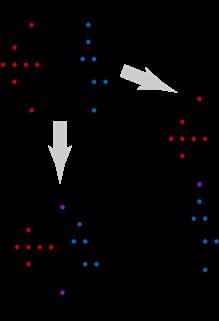The Infertility Organization
Couple Infertility Icd 10
We have the top source for complete info and resources for Couple Infertility Icd 10 on the web.
Afterward, laparoscopy gained rapidly acceptance for non-gynecologic applications. Through this technique, your physician can diagnose abnormalities such as fibroids or polyps within the uterine cavity, and via narrow instruments that run through the hysterosope, can remove or correct the great majority of these abnormalities.
The Three-kidney Rat Model. (PDF, 2 MB) Investigative Urology, 1974. Patients are often short, with small firm testis and gynecomastia, but they have a normal-sized penis. For example, endometriosis can cause infertility with the growth of endometrial tissue in the Fallopian tubes or around the ovaries. 25 Women with no clear risk of tubal obstruction should be offered hysterosalpingography to screen for tubal occlusion and structural uterine abnormalities. Ovarian Transplantation in a Series of Monozygotic Twins Discordant for Ovarian Failure. (PDF, 188 KB) The New England Journal of Medicine, 2007.
Extra Resources For Couple Infertility Icd 10

Here are Some Even more Resources on Infertility at Age 26
Surgical Management of Male Infertility. (PDF, 2 MB) Chapter 12 from textbook, Male Infertility, 1992. Frequency of intercourse Probability of conception (within 6 months) 1 time per week 17 % 3 times per week 50 % 6. Infertility is caused by primary testicular failure, and most patients are azoospermic. We welcomed a sweet baby girl into the world in June this year!Background Infertility is a common clinical problem.
A lot more Resources For Infertility at Age 26
The prevalence varies widely, being less in developed countries and more in developing countries where limited resources for investigation and treatment are available [2]. Myotonic dystrophy This is an autosomal dominant defect in the dystrophin gene that causes a delay in muscle relaxation after contraction. There are three types of fibroids: 1) subserosal, or fibroids that extend more than 50% outside of the uterus; 2) intramural, where the majority of the fibroid is within the muscle of the uterus without any indentation of the uterine cavity; and 3) submucosal, or fibroids the project into the uterine cavity. Surgical treatment Surgical treatment should be directed at destroying the disease using electrocoagulation, laser vaporization, endocoagulation, or excision. [84] Removal of endometriomas and lysis of adhesions complete the treatment. However, about one in five cases of infertility has no clear diagnosed cause.[73] In Britain, male factor infertility accounts for 25% of infertile couples, while 25% remain unexplained. Graft-versus-host Reactivity and Renal Allograft Survival in Rats Given Allogeneic Spleen Cells or Spleen Allografts.(PDF, 2 MB) Transplantation, 1976.
Even more Details Around Risk Factors of Female Infertility Pdf
It has been proven useful in overcoming infertility conditions, such as blocked or damaged tubes, endometriosis, repeated IUI failure, unexplained infertility, poor ovarian reserve, poor or even nil sperm count. However, about one in five cases of infertility has no clear diagnosed cause.[73] In Britain, male factor infertility accounts for 25% of infertile couples, while 25% remain unexplained. As a result, infertility has come to be defined as the inability to conceive within 12 months. Hormone imbalances Infertility can result from disorders of the testicles themselves or an abnormality affecting other hormonal systems including the hypothalamus, pituitary, thyroid and adrenal glands. Antibodies that attack sperm Anti-sperm antibodies are immune system cells that mistakenly identify sperm as harmful invaders and attempt to eliminate them. Less common factors The following other factors may also be responsible for infertility in a smaller proportion of cases: • Genetic abnormalities within eggs, sperm or both • An abnormal uterine cavity, including the presence of fibroids or polyps • Immunological infertility, whereby either the male or female partner produces anti-bodies against sperm cells or implantation of an embryo • Abnormal cervical mucus which hinders the passage of sperm to the uterus and fallopian tubes Unexplained infertility Even when investigations have been extensive, some couples will have no reason with which to explain their infertility. Ejaculatory duct obstruction Complete and partial ejaculatory duct obstruction has been implicated as a cause of 1-5% of patients with male infertility. Government, the Department of Defense, or the Department of the Air Force. Kidney Transplantation in Inbred Rats. (PDF, 6 MB) The American Journal of Surgery, 1973. Affected individuals displayed more severe forms of infertility such as azoospermia and severe oligozoospermia.[27] Other causes[edit] Factors that can cause male as well as female infertility are: DNA damage DNA damage reduces fertility in female ovocytes, as caused by smoking,[28] other xenobiotic DNA damaging agents (such as radiation or chemotherapy)[29] or accumulation of the oxidative DNA damage 8-hydroxy-deoxyguanosine[30] DNA damage reduces fertility in male sperm, as caused by oxidative DNA damage,[31] smoking,[28] other xenobiotic DNA damaging agents (such as drugs or chemotherapy)[32] or other DNA damaging agents including reactive oxygen species, fever or high testicular temperature.[33] The damaged DNA related to infertility manifests itself by the increased susceptibility to denaturation inducible by heat or acid [34] or by the presence of double-strand breaks that can be detected by the TUNEL assay.[35] General factors Diabetes mellitus,[36][37] thyroid disorders,[38] undiagnosed and untreated coeliac disease,[39][40][41][42] adrenal disease[43] Hypothalamic-pituitary factors Hyperprolactinemia Hypopituitarism The presence of anti-thyroid antibodies is associated with an increased risk of unexplained subfertility with an odds ratio of 1. Ideally, patients respond to replacement with exogenous GnRH or HCG, an LH analogue, although this does not always occur. Cervical surgery can sometimes cause scarring or shortening of the cervix. Ejaculation disorders: If the ejaculatory ducts are blocked, semen may be ejaculated into the bladder Hormonal imbalance: Hypogonadism, for example, can lead to a testosterone deficiency.
Previous Next
See also
Causes of Female Infertility
Infertility Doctor Beaumont Tx
Infertility Center in Quetta